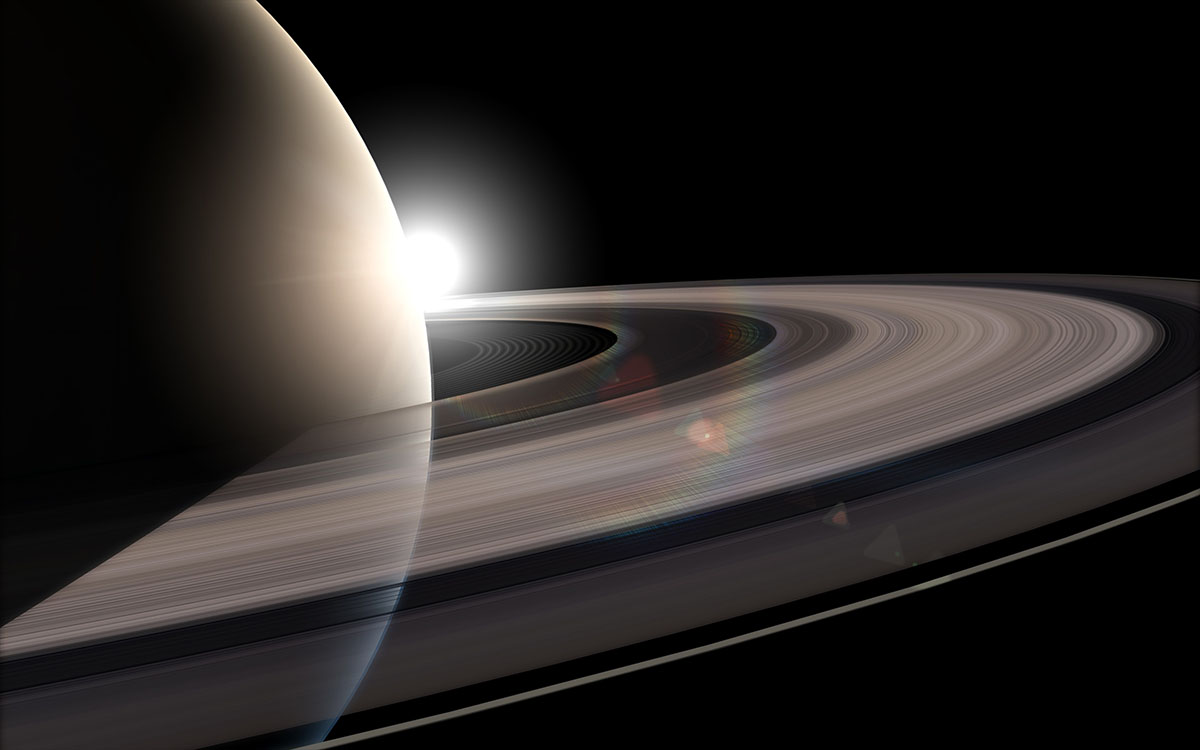gone with the supersonic wind

Next time you want to complain about the weather on our planet, take a moment to think about just how much worse it could be if you were living on Saturn. Sure you’d have the beautiful rings, a bubbling cauldron of alien chemistry that creates the kinds of colors and clouds astronomy wallpapers are made of, but you’d also have supersonic winds, crushing pressures, punishing cold and storms that seem to go on without end, fueled by the planet’s internal heat and sunlight that travels nearly 870 million miles to reach the cloud tops. The world featured in some of our favorite images of space, is also one of the harshest places in our solar system.
Normally, on a rocky planet like ours, winds travel in a relatively thin atmosphere and slam into mountains as they try to whip around the planet. But in the vast innards of gas giants, winds have nothing to slow them down as they’re continuously fed with more and more energy. Jupiter’s gusts can exceed 300 miles per hour. Saturn boasts wind speeds of 1,118 miles per hour. Even though that’s almost Mach 1.5, it’s actually only the second fastest atmospheric blast in our system. Neptune’s storms generate gusts clocked at 1,200 miles per hour. Of course if we move out of the solar system and consider the insane weather of Hot Jupiters, we can find an absolutely terrifying atmospheric shockwave that travels at some 10,800 mph. On rocky planets, storms fade as they run out of fuel or move away from their power source. On gas giants, storms will last for years on end, absorbing energy from their parent stars while the heat in the planets’ innards drives the clouds’ motion.
Aside from supersonic winds and powerful storms that keep on going in the alien atmospheres of gas giants, Saturn also has lightning. And not just any lightning. These mighty electrical discharges make lightning bolts on Earth seem like little static sparks by comparison, unloading 10,000 times the energy and sending radio waves for millions of miles into space where they can be picked up by the Cassini probe. If one of the surging tendrils of plasma that flash into existence on Saturn were to hit a human, I don’t think there would be anything left except a burn ring. Compare that to our normal, everyday lightning which can do a great deal of damage to our bodies but isn’t necessarily lethal. And it gets even more extreme. Saturn is home to a number of record setting lightning storms that can last for months. In fact, a thunderstorm in its cloud tops is currently setting a record for the longest electrical storm ever recorded, going well into its eighth month.
Now, you might wonder why any of this matters to us who evolved on another world with much calmer and far less dangerous weather. However, studying the behavior of atmospheres on other planets actually helps us get a better idea of how Earth’s weather systems might work by comparing and contrasting what we can see on an alien planet with what we see here. The goal is to understand what the fundamental drivers behind today’s climates are, how they came together, and what we could reasonably expect in the future.





